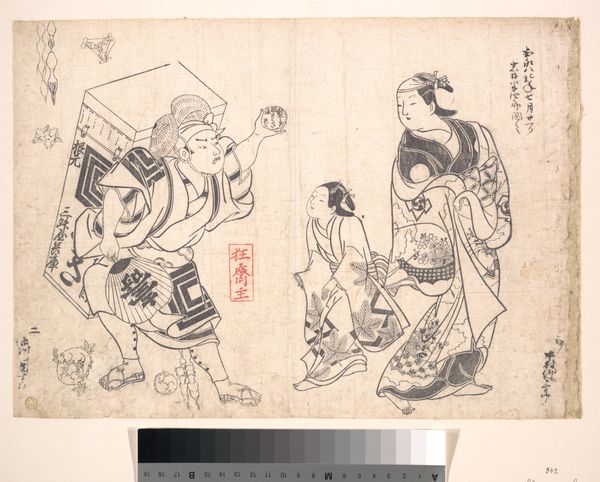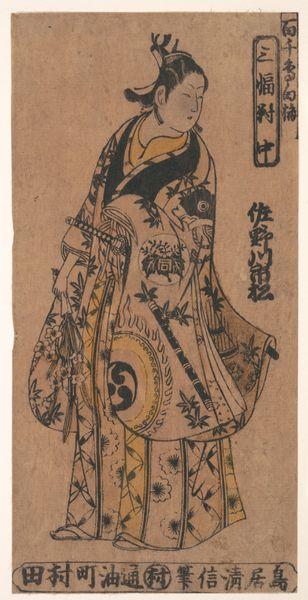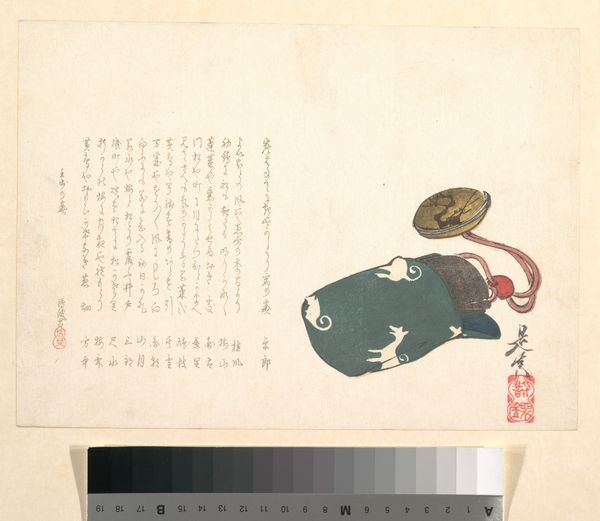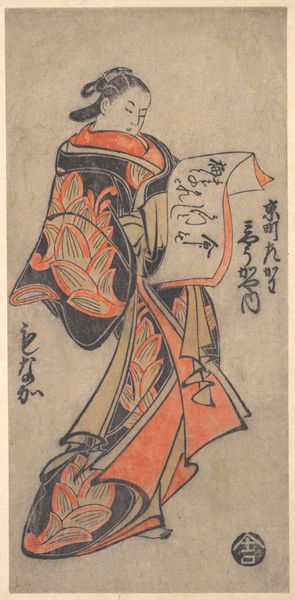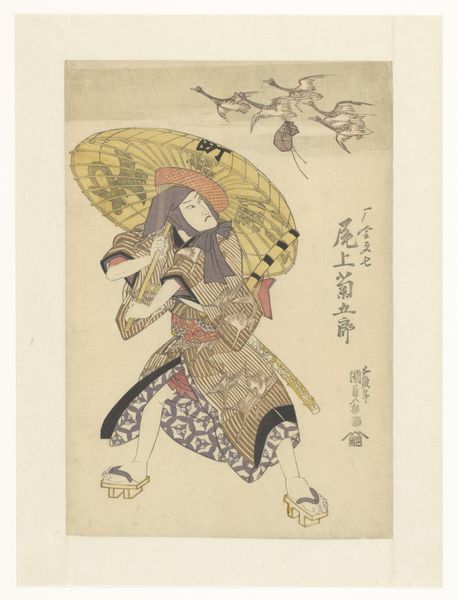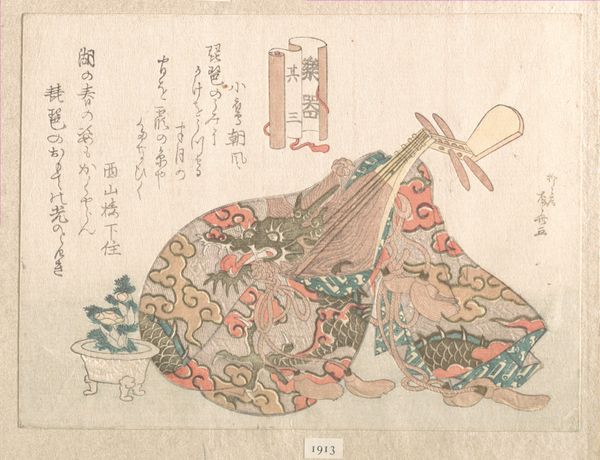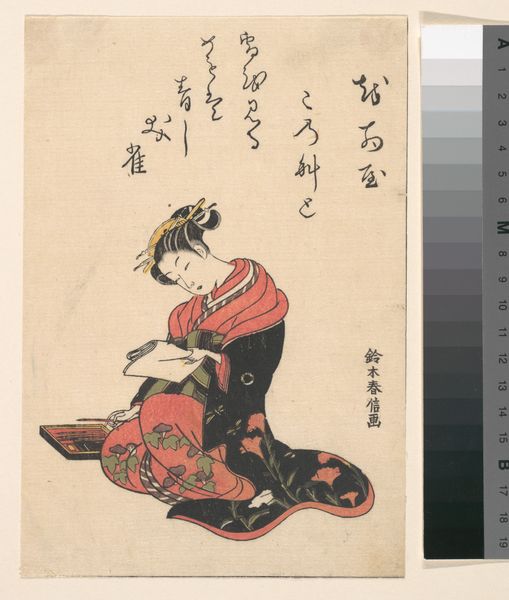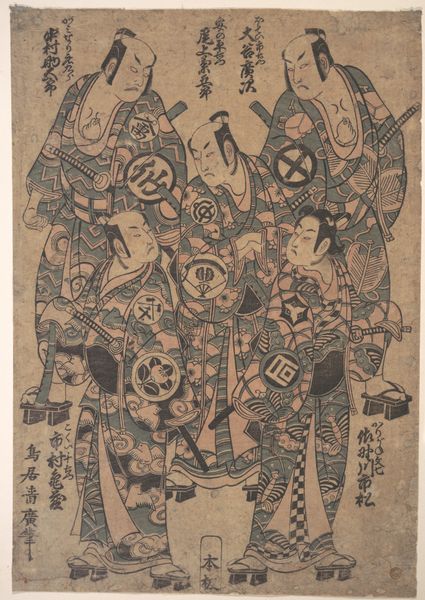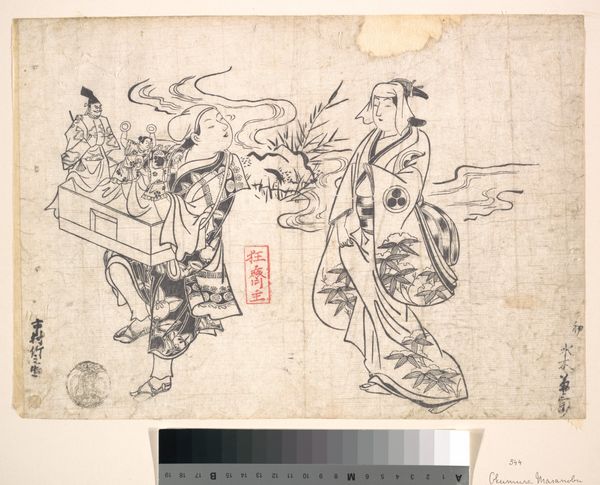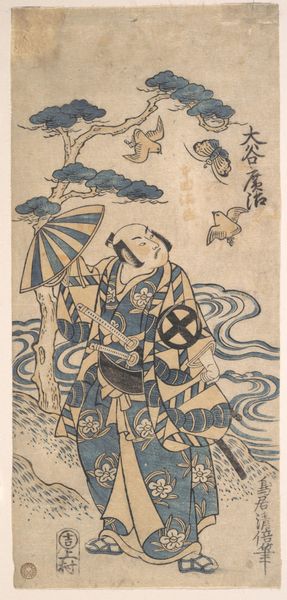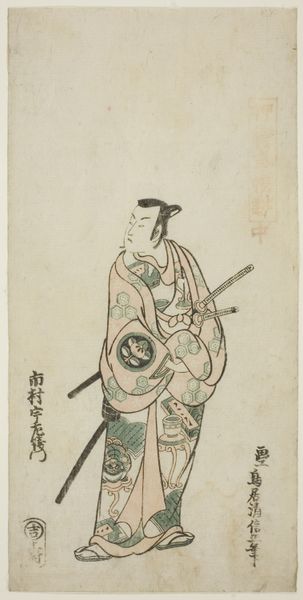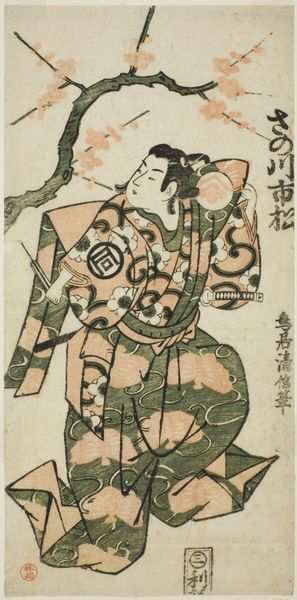
The Actor Ichimura Kamezo in the Role of Sogo no Juro Sukenari, in the Drama "Edo Murasaki Kongen Soga" 1751 - 1771
0:00
0:00
print, woodblock-print
#
portrait
# print
#
asian-art
#
ukiyo-e
#
figuration
#
woodblock-print
#
japanese
Dimensions: H. 12 1/4 in. (31.1 cm); 5 7/8 in. (14.9 cm)
Copyright: Public Domain
Editor: Here we have Torii Kiyomitsu's woodblock print, "The Actor Ichimura Kamezo in the Role of Sogo no Juro Sukenari, in the Drama 'Edo Murasaki Kongen Soga,'" created sometime between 1751 and 1771. I’m immediately drawn to the elaborate costume, particularly the repeating pattern of stylized birds. What strikes you most about this piece? Curator: It’s fascinating how this print intersects with issues of representation within Kabuki theatre. This image showcases an actor playing a specific role, but it also hints at the complexities of gender and identity. Notice the onnagata tradition, where male actors portray female roles; it was central to Kabuki. Editor: I see what you mean. Can you tell me more about that context? Curator: Consider the social position of actors during the Edo period. Despite their popularity, they were often marginalized, akin to other professions considered outside the strict social hierarchy. These theatrical representations became a crucial, and often subversive, means of exploring alternative identities. The detailed rendering and display of status items becomes a stage upon which social norms could be examined and questioned. How does this inform your reading of the figure? Editor: I guess I never really thought of the subversive potential within traditional art forms like this. I had been interpreting the costumes purely aesthetically! Curator: And that’s perfectly valid, but part of my work is inviting everyone to expand their perspectives on how identities are explored in social narratives. The costume itself and performance style represent both constraint and performance. It reminds us that how we are perceived relies heavily on the act of observing and the viewer. Editor: I definitely see this piece differently now. Thanks! Curator: And thank you; your initial observations provide entry points for rich conversations about cultural performances.
Comments
No comments
Be the first to comment and join the conversation on the ultimate creative platform.

